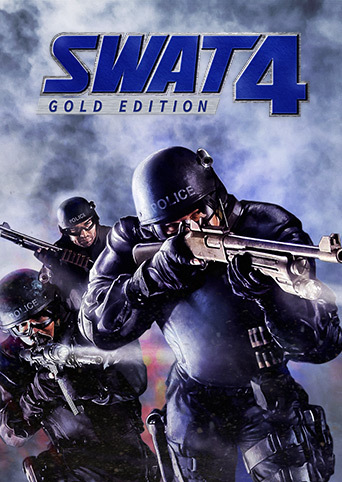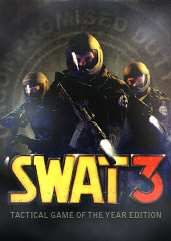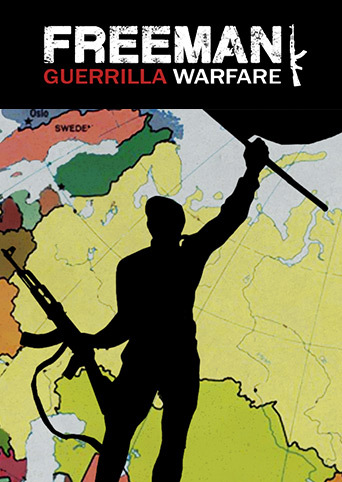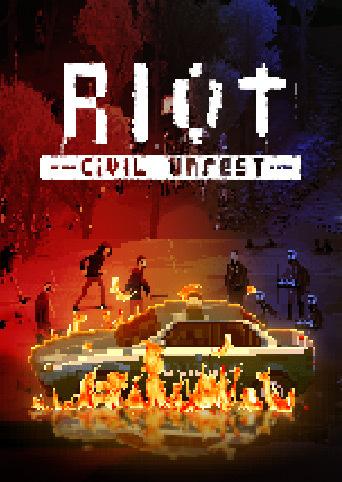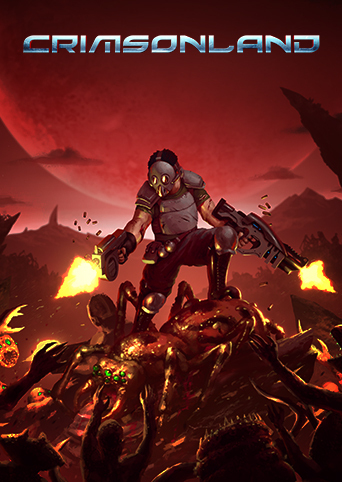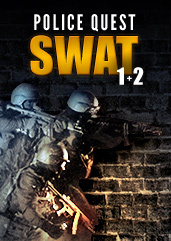
Ready or Not (2023)
Genres:Indie, Shooter, Simulator, Tactical
Themes:Action
Game modes:Single player, Co-operative, Multiplayer
Story:Ready or Not is a tactical first person shooter which places you in the boots of an elite SWAT team, tasked with diffusing hostile situations in intense, claustrophobic environments. It's set in a nondescript modern America, where an income disparity between the classes have become unsustainable and the country has been plunged into havoc. Bring order to chaos with up to 8 players in cooperative play, battle enemy squads in a close player-vs-player environment, or command AI in a striking single-player mode.Show more
This game has been getting its content cut for a long time, and now due to to console release and cross-play they have censored parts of the game. The original artistic intent and atmosphere should be preserved and not changed; with GOG's feature of version selection, the game can be played as it was before.
Hello, if this were to be release here, please be a uncensored Version. Due to the upcoming console release they claim they have to censor the game. This is just sad, please if possible, preserve the original uncut PC-Game, especially important for a tactical game that originally aimed to be realistic and immersive.
When release do the uncensored Version. Way better to realism! The game is great as CQB. Realistic banger and weapon and armory unlocked. Heard there's PvP soon.
When I first launched Ready or Not, I was immediately struck by its atmosphere — dark, tense, and grounded. It felt like being dropped into the middle of a real operation. The variety of missions, the detailed weapon handling, and the immersive design pulled me in. After some time, I decided to upgrade to the Supporter Edition to experience even more of what the game had to offer.
I remember the unique uniforms and HRT-themed cosmetics that came with that edition — they weren’t just skins to me. They were part of what made me feel immersed, like I was really part of a team. They brought back memories, made each mission feel personal.
Over time, things began to change. Some content was removed or altered, such as the iconic HRT gear and the shield designs, which had been part of the supporter content. New gear was introduced, but some of it felt disconnected from the original vision — even linked to in-game factions the player is supposed to oppose.
Certain promised features, like tactical planning tools or additional equipment, never made it into the game, despite being listed in early descriptions. That was a tough realization for someone who had supported the project from early access.
Even with these changes, I stuck with the game. The developers released new content and DLCs that offered some value. But later, with the approach of the console release, more changes came, including censorship that affected the game’s visual tone — especially in areas like gore and realism, which had once set Ready or Not apart.
I installed a mod to restore some of the censored content — it didn’t bring everything back, but helped preserve part of the original tone. Meanwhile, core mechanics like gas, shields, and even certain graphics features are sadly broken.
Despite the frustration, Ready or Not still holds a strange place in my heart — a reminder of what early access games can be, both in promise and in heartbreak.
Though a lot of updates have broken the game and they can't keep voice actors to save their life, Hate-Crime-Or-Not is a very fun game and a spiritual successor to the SWAT/Police Quest series. Biggest complaint is taking out the ability to put guns on safe but otherwise highly recommend and look forward to seeing it come to GOG.
Censoring and changing the original version harms the artistic integrity of the gaming experience as a whole. The game should be played on consoles, but not at the expense of having to rewrite code to placate an ESRB guideline.

Black & WhitePlay the role of a deity in a land where the surroundings are yours to shape and its people are yours to lord over. Be an evil, malevolent god and the natives will worship you with fear in their eyes. Play as a kind, benevolent god and they will worship you with love in their hearts. Your actions decide whether you create a heaven or hell for your worshipers. Then select a creature from the land to act as your representative in the world. Raise it to gigantic proportions and teach it to do your bidding--whether the animal grows into an evil colossus of mass destruction or a kind and gentle giant is up to you. Progress through the game's rich storyline performing powerful miracles to battle other deities and become the world's supreme god.Top Trending Open world Sandbox

FreelancerEight hundred years prior to the start of our story, bitter conflict divided all of mankind. A handful of colonists struck out on their own to begin anew - far away from the Earth and its turmoil. Several ships were launched with enough equipment and supplies to give the hundreds onboard a fighting chance - but since the area around far-off Sirius had never been surveyed, no one really knew what to expect. What they found was a new frontier of free-flowing natural resources, unexplored territories, great wonders and lurking dangers. Each ship, representing the clusters of people and their earthly place of origin, settled into different parts of the galaxy pre-selected by their ship-board computer to give them the best chance of survival.
Life was hard in the beginning, but over the 800 years the different colonies prospered and expanded their territories, claiming more and more systems for their own. Survival and propagation eventually led to growth and profit as each of the colonies developed specialties and fostered commerce. As the colonies grew and time passed their connections with their roots on Earth dwindled and they lost their memories of the conflicts of the past. Soon their attention was dominated by new, more immediate conflicts. Feelings of lost ancestral connection spurred anachronism in the look of the great cities, and created a somewhat distorted image of each colony's cultural heritage. In the ever-expanding outer edge of the territories, frontier lawlessness prevailed.
The Houses: Each shipboard colony that left Earth carried some memory of its origins in its name. The Liberty carried Americans, The Bretonia flew from The United Kingdom and surrounding territory, The Kusari from Asia, and the Rheinland launched with Germanic cargo.
As each ship settled and colonies began to expand, they knew little about each other and their advancing development. Finally, little by little, the individual colonies found each other and began to set up trade routes to link their systems for commerce and solidarity.
Today, with each colony firmly rooted in its respective corner of the galaxy, the colonies rely heavily on each other for trade and industry but also compete for resources and new territories in the Border Worlds. The colonies mandate member governments in "The New Alliance" within the Sirius sector. To control conflicts, each colony has forged alliances and treaties with others as they have grown. Competition remains fierce, however. Struggles rage for supremacy in business, commerce, resources, power and control. There can be tenuous peace between colonies' political agendas, but the grabs for holdings constantly unsettle the volatile frontier.Our Pick Top Trending Science fiction Sandbox

Black & White 2In the game, the player takes the role of a god called from the void (nothingness) to help those who invoked them. However, the player is not an omnipotent style god, but rather a god who rises and falls with his believers and the player must help develop their nature according to their good or evil desires. The player also has a creature, their physical representation in the world, which takes the form of an anthropomorphic ape, lion, wolf, turtle, cow, or tiger. Its physical manifestation can grow to an immense size, and adopt a good or evil persona separate of the player's. They develop their character as the player rewards or punishes their actions. In addition to the god simulation and city-building elements introduced in the original Black & White, Black & White 2 also features elements of real-time strategy gameplay, with the addition of controllable warfare and fighting units.Top Trending Action Fantasy Comedy Sandbox

Max PayneMax Payne is a man with nothing to lose in the violent, cold urban night. A fugitive undercover cop framed for murder, hunted by cops and the mob, Max is a man with his back against the wall, fighting a battle he cannot hope to win. Max Payne is a relentless story-driven game about a man on the edge, fighting to clear his name while struggling to uncover the truth about his slain family amongst a myriad of plot-twists and twisted thugs in the gritty bowels of New York during the century's worst blizzard.
The groundbreaking original cinematic action-shooter, Max Payne introduced the concept of Bullet Time in videogames. Through its stylish slow-motion gunplay combined with a dark and twisted story, Max Payne redefined the action-shooter genre.Top Trending Action Thriller

Digimon WorldDigimon world is a game that allows a player to raise their own Digimon and teach it to battle.Our Pick Top Fantasy Science fiction

The Operative: No One Lives ForeverNo One Lives Forever is to be a fast-paced, story-driven first-person shooter that delivers over-the-top action, outrageous villains, and wry humor in the tradition of the great 1960's Bond films. You play Cate Archer an undercover operative for MI-Zero. Your mission is to arrange for the defection of a prominent East German biophysicist that goes by the name of Otto Dentz. However things go wrong when a terrorist group known as the HARM abducts Dentz during a flight to England.
Assume the role of Cate Archer, an operative working for UNITY, a secret organization fighting to free the world from the clutches of H.A.R.M.. From tense subterfuge to in-your-face combat, No One Lives Forever ups the ante with 1960's-influenced spy action, vivid international locates, and deadly arch villains.Top Trending Action Comedy Stealth

Resident Evil Code: Veronica XExperience another terrifying chapter in the Resident Evil series with Resident Evil: Code Veronica X. After narrowly surviving the horrific onslaught in Raccoon City, Claire Redfield now seeks clues in search of her missing brother, Chris. Join Claire as she uncovers the insidious activities of the Umbrella Corporation. Avoid or eliminate flesh-eating zombies and horrific beasts. Use a variety weapons, items, and clues scattered around Raccoon City to help you survive the nightmare and make sure the virus doesn't spread any farther.Top Trending Action Horror Survival

No One Lives Forever 2: A Spy in H.A.R.M.'s WayA year after the first No One Lives Forever, tensions are rising between United States and Soviet Union over the tiny, but strategic Isle of Khios. Jones, now the sole Commander of U.N.I.T.Y. (after Smithy was discovered to be a H.A.R.M. spy in the first No One Lives Forever), is taking a vacation and leaves Temporary Director Lawrie in charge.
The sequel to the award-winning No One Lives Forever returns you to a world of espionage, intrigue, and dry humor. In her second adventure, British UNITY operative Cate Archer must investigate a super-secret Soviet project that, if successful, could bring about the third world war.Top Action Fantasy Historical Comedy Stealth

PreyPrey tells the story of Tommy, a Cherokee garage mechanic stuck on a reservation going nowhere. Abducted along with his people to a menacing mothership orbiting Earth, he sets out to save himself and his girlfriend and eventually his planet.Our Pick Top Action Science fiction

Max Payne 2: The Fall of Max PayneMax Payne 2 is a third-person shooter, in which the player assumes the role of Max Payne, but also plays as Mona Sax in a few levels. Initially, the player's weapon is a 9mm pistol. As they progress, players access other weapons including other handguns, shotguns, submachine guns, assault rifles, sniper rifles, and hand-thrown weapons. To move the game along, the player is told what the next objective is through Max's internal monologue, in which Max iterates what his next steps should be.Top Trending Action Thriller








